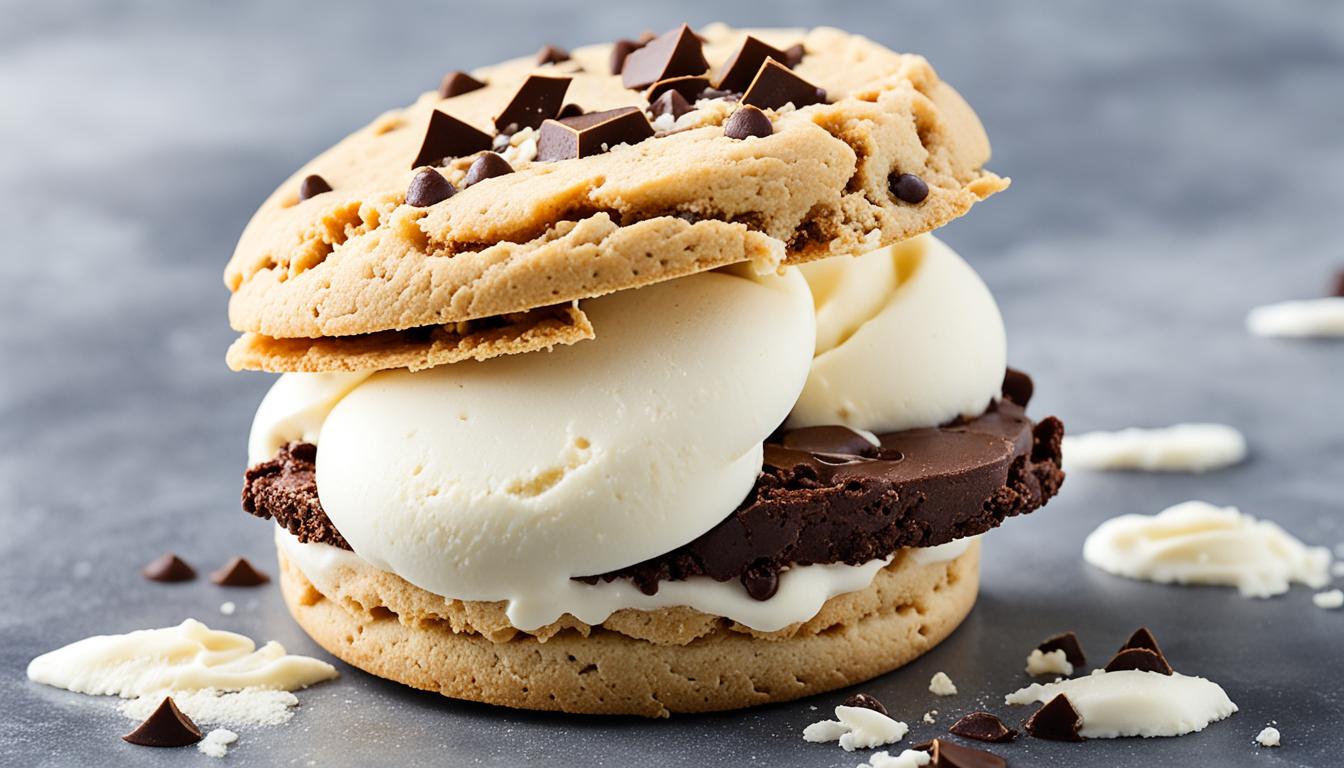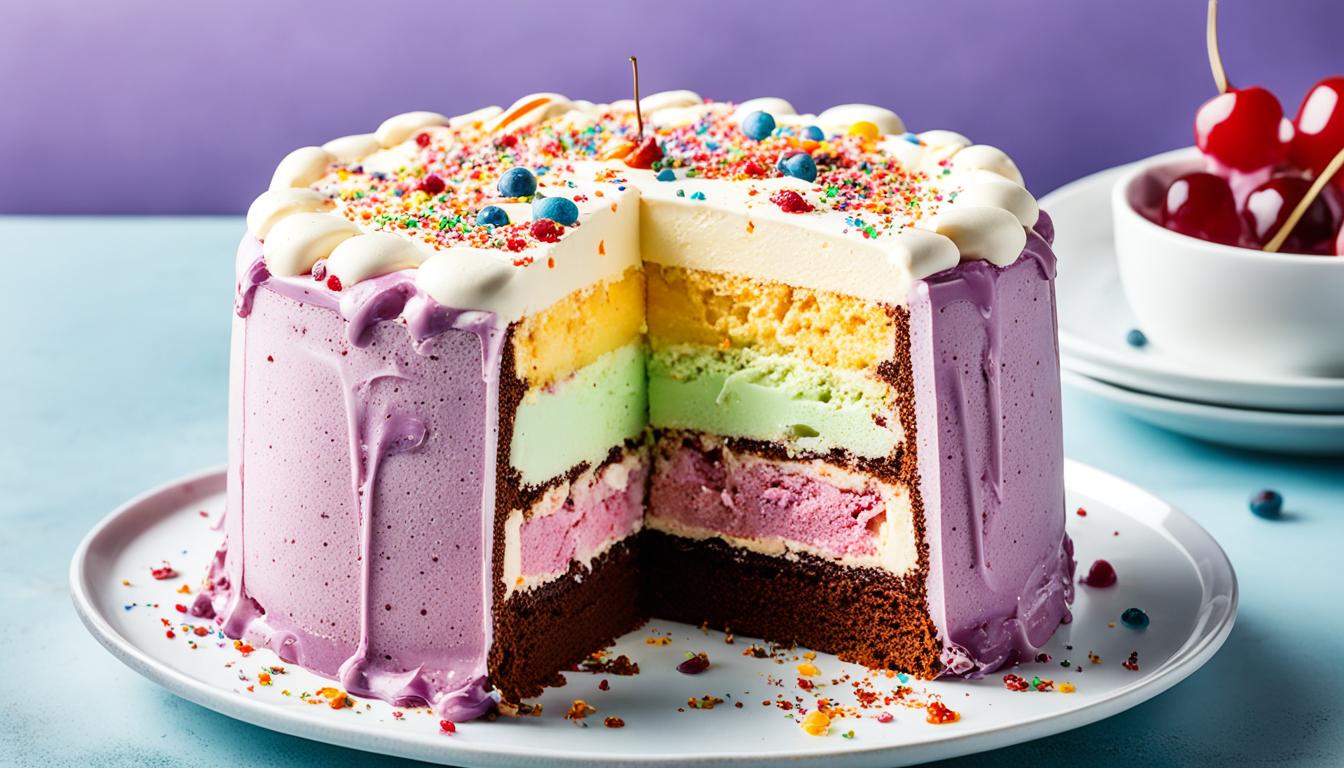Imagine a hot summer day, the sun blazing down, and all you want is that delightful, cool taste of ice cream melting in your mouth. The good news is, you don’t have to head to the store or worry about complicated ingredients to satisfy your sweet tooth. You can make ice cream with milk, and it’s surprisingly simple. Brighten your days by learning how to whip up delicious homemade ice cream with milk, allowing you to indulge in creamy, dreamy flavors right in your kitchen.
In this guide, we’ll explore the ins and outs of making ice cream using milk, which not only makes the process straightforward but can also yield mouthwatering results just as good—if not better—than store-bought options. From understanding the different types of milk you can use to experimenting with your favorite flavors, we’ll cover everything you need to enjoy the delightful experience of creating the perfect ice cream recipe with milk at home. So, roll your sleeves up and get ready for a sweet adventure!
Key Takeaways
- You can successfully create ice cream using various types of milk, including fat-free, 2%, or full-fat.
- Experiment with flavor combinations like cookies and cream or fruity mango for a unique twist on classic ice cream.
- Ingredients like condensed milk can help achieve a smoother texture in your homemade ice cream.
- Chill your mixture before churning for the best consistency and flavor.
- Freezing the ice cream mixture for at least 6 hours allows it to achieve that perfect scoopable texture.
- There are easy vegan options too, using full-fat coconut milk, catering to diverse dietary preferences.
Understanding Ice Cream Basics
Ice cream is a beloved dessert enjoyed in many forms and flavors. By understanding the types of ice cream and the essential ice cream ingredients, you can elevate your homemade ice cream with milk to new heights. This section will introduce you to these fundamental concepts, setting the stage for your ice cream-making journey.
Types of Ice Cream
Diving into the world of ice cream reveals several popular types. Here are two prominent styles:
- Philadelphia Style: This method uses a base of cream and sugar, emphasizing a creamy texture without the use of eggs.
- French Style: Involves a custard base made with egg yolks, which adds richness and a smooth consistency.
Each type offers a unique taste experience due to variations in preparation and ingredient ratios. Understanding these types of ice cream can help you decide which style to experiment with when making homemade ice cream with milk.
Key Ingredients in Ice Cream
The texture and flavor of ice cream rely heavily on its ingredients. The primary components include:
| Ingredient | Function |
|---|---|
| Cream | Provides a smooth texture with about 36% fat content, crucial for a rich mouthfeel. |
| Whole Milk | Offers a lighter texture, contains about 4% fat, creating a more icy feel in ice cream made solely from milk. |
| Sugar | Lowers the freezing point of the mixture, typically added in amounts ranging from half a cup to ¾ cup. |
| Flavorings | Enhance taste, such as a teaspoon of vanilla or citrus zest for additional aroma. |

Understanding the role of these ice cream ingredients will allow you to create a balanced and delicious base for your homemade ice cream with milk. With this knowledge, you are well on your way to mastering the art of ice cream making!
Can You Make Ice Cream with Milk? The Answer!
Yes, you can make ice cream with milk, and it’s a delightful way to enjoy this frozen treat without relying on heavy cream. The quality and type of milk you choose play a significant role in the final product. Milk’s fat content contributes to the smooth and creamy texture of ice cream. Even lower-fat options can yield delicious milk-based ice cream when combined skillfully with other ingredients.
What Makes Milk Suitable for Ice Cream?
The composition of milk makes it a versatile base for ice cream. Key factors include:
- Fat content: The higher the fat content, the creamier your ice cream will be. Whole milk offers more richness compared to skim or low-fat milk.
- Flavor: Milk provides a mild, comforting flavor that serves as the perfect canvas for various add-ins and flavorings.
- Temperature: When frozen, milk solidifies well, lending itself to a pleasing texture without ice crystals.
Experimenting with different types of milk allows you to create unique flavors and textures in your ice cream. Many have turned this experiment into a delightful kitchen project, enjoying the versatility of milk. Various methods to customize your milk ice cream include:
| Type of Milk | Fat Content (%) | Texture |
|---|---|---|
| Whole Milk | 3.25% | Creamy and Rich |
| 2% Milk | 2% | Smooth but Less Rich |
| Skim Milk | 0% | Light and Less Creamy |
| Almond Milk | As per brand | Nuts and Slightly Creamy |
| Coconut Milk | About 24% | Very Rich and Creamy |
Each type of milk contributes distinct qualities to milk-based ice cream. Understanding these differences enables you to achieve the perfect balance of flavor and creaminess in your homemade recipes.

Ingredients Needed for Homemade Milk Ice Cream
Creating delicious milk ice cream at home requires understanding the right ingredients. You have numerous options for types of milk for ice cream, allowing you to tailor the flavor and creaminess to your liking. Let’s explore these components in detail.
Types of Milk You Can Use
When making an ice cream recipe with milk, consider the following types:
- Whole Milk: Rich and creamy, it contributes to a smooth texture.
- 2% Milk: Offers a decent creaminess while reducing fat content.
- Skim Milk: Low in fat, it results in a lighter ice cream.
- Alternatives: Plant-based options like almond or coconut milk can create unique flavors and are perfect for dairy-free diets.
Essential Additives for Flavor
Besides milk, your ice cream recipe can be enhanced with various flavoring agents. Key ingredients include: Some popular flavoring agents for ice cream include vanilla extract, fruit puree, chocolate chips, and even spices like cinnamon or nutmeg. These ingredients can add depth and complexity to the flavor profile of your ice cream, making it even more delicious. Additionally, if you’re looking for a little extra kick, you can even experiment with adding coffee or espresso to your ice cream base to increase the chocolate ice cream caffeine content.
- Cane Sugar: Adds the necessary sweetness to balance the flavors.
- Vanilla Extract: A classic addition that elevates the overall taste.
- Special Flavors: Consider incorporating chocolate chips, fruit purees, or even cookie dough pieces for exciting variations.
With the right combination of types of milk for ice cream and flavorful additives, you can create a delightful treat that everyone will love.

Easy Milk Ice Cream Recipe You Can Try
Making your own ice cream at home is an enjoyable and straightforward process. This easy milk ice cream recipe allows you to create a delicious treat without heavy cream. With just a few simple ingredients, you can savor a creamy dessert that delights the taste buds.
Step-by-Step Instructions
Follow these steps to create your own milk ice cream:
- Gather your ingredients: You will need 2 parts cream, 1 part whole milk, and sugar to taste (about 1/2 to 3/4 cups based on preference). Optionally, you can add fresh fruits like raspberries or flavorings such as vanilla extract.
- Mix the ingredients: In a mixing bowl, combine the milk, cream, sugar, and any flavorings. Stir until the sugar is dissolved.
- Chill and churn: If you have an ice cream maker, pour the mixture into it and churn for about 20-25 minutes. If you don’t have one, you can freeze the mixture in a bowl, stirring every 30 minutes until it reaches your desired consistency.
- Transfer to a container: Once properly churned, transfer your ice cream into a freezer-safe container. Smooth the top and seal it well.
- Freeze: Let the ice cream freeze for at least 6 hours or until solid. You can serve it once it’s frozen to your liking.
Tips for Perfecting Your Ice Cream Texture
To achieve a creamy texture in your ice cream, consider these helpful tips:
- Use whole milk instead of 1% milk to enhance the creaminess.
- Churning for longer can prevent ice crystals from forming, resulting in a smoother texture.
- Gently mix your ingredients; over-whipping after adding cream may adversely affect texture.
- For added flavor and fun, try incorporating crushed cookie pieces, nuts, or chocolate swirls into the mixture before freezing.
Homemade ice cream can last in a freezer-safe container for up to 2 weeks, allowing you to enjoy your creation over time. If you’re keen on experimenting, you might also explore models like the Cuisinart Basic Ice Cream Maker, Cuisinart Pure Indulgence Ice Cream Maker, or the more advanced Breville Ice Cream Compressor. These machines can help perfect your easy milk ice cream recipe.

Making Ice Cream Without Heavy Cream
Creating delicious ice cream without heavy cream opens up a world of possibilities for those seeking a lighter treat. Choosing low-fat ice cream alternatives can lead to a creamy and satisfying dessert using just milk. You can achieve a delightful texture by incorporating proper techniques and ingredients.
Low-Fat Alternatives to Heavy Cream
Whole milk serves as a fantastic base for milk ice cream without cream. A simple recipe calls for 4.5 cups of whole milk, 1.125 cups of granulated sugar, and 1.5 tablespoons of pure vanilla. You can further enhance the texture by adding cornstarch as a thickening agent or utilizing non-dairy milk options. The preparation time averages around 25-30 minutes, with a chilling period of a few hours for no-churn methods.
How to Maintain Creaminess
One way to ensure your ice cream maintains a creamy consistency involves freezing the mixture correctly. Incorporating air into the mixture while freezing, especially when using an ice cream maker, contributes to a smoother texture. You might also consider adding optional ingredients like guar gum for added stability. Storing your homemade ice cream in an airtight container allows it to keep fresh in the refrigerator for up to 2-3 months.

Exploring No-Churn Milk Ice Cream Options
Making delicious ice cream at home doesn’t always require a churner. You can embrace various no-churn ice cream methods that make the process simple and fun. Whether using basic kitchen tools or exploring creative options, you can enjoy a creamy treat without complicated machinery.
Methods for No-Churn Ice Cream
Here are some effective approaches to achieve that delightful milk ice cream no churn:
-
Sweetened Condensed Milk Method:
This method gives you a rich and creamy result. Combine ½ cup of Dutch process cocoa powder, ½ cup of whole milk, a can of sweetened condensed milk, 2 cups of heavy whipping cream, a pinch of sea salt, and vanilla extract. Heat the cocoa with milk and condensed milk until it steams. Chill, then fold in whipped cream and freeze for 6 hours.
-
Heavy Cream and Eggs Method:
Using heavy cream and pasteurized eggs delivers a traditional ice cream flavor. Beat the heavy cream until it forms soft peaks, then gently mix in the egg yolks and any flavorings. This results in a decadent, smooth texture.
-
Food Processor Method:
This method allows for versatility with any recipe. Blend the ice cream mixture in a food processor to break down ice crystals and incorporate air. Re-freezing this mixture ensures a lovely creamy texture once set.

Each no-churn ice cream method offers unique flavors and textures. You can also experiment with dairy-free versions using coconut products or alternative milks such as oat or almond milk. For delightful variations, consider adding chunks of cookie dough, brownie bits, or marshmallows. Enjoy the creativity that comes with homemade ice cream without the need for fancy equipment!
Top Tips for Customizing Your Milk Ice Cream
Customizing milk ice cream is a fun way to unleash your creativity in the kitchen. You can elevate your homemade treat by adding unique flavors and delightful textures to make it truly yours. Explore various flavor add-ins and swirls, as well as the best toppings to enhance your dessert experience.
Flavor Add-Ins and Swirls
When it comes to customizing milk ice cream, flavor add-ins play a significant role. Consider adding:
- Fresh fruits like strawberries, bananas, or peaches
- Chopped nuts such as almonds, pecans, or walnuts
- Chocolate pieces or chips for a richer taste
- Spices like cinnamon or nutmeg for warmth
- Swirls of caramel or chocolate sauce for an extra indulgent experience
For the best results, try to keep your mix-ins small, about the size of a chocolate chip. This ensures that they distribute evenly throughout the ice cream. You can get creative with swirls by drizzling your favorite sauce throughout the churned mixture before freezing.
Best Toppings to Enhance Your Ice Cream
The right toppings can transform your milk ice cream at home into a gourmet dessert. Here are some excellent topping options to consider:
- Whipped cream for a light and airy texture
- Sprinkles for a pop of color
- Crushed cookies or graham crackers for crunch
- Chopped fruit for freshness
- Chocolate syrup or fudge for added sweetness

Feel free to mix and match these ideas for an ice cream creation that’s uniquely yours. Whether you’re customizing milk ice cream for a special occasion or just a casual treat, these tips will help enhance your homemade concoction.
Storage and Serving Suggestions
Storing homemade ice cream properly plays a crucial role in maintaining its freshness and delightful texture. With the right strategies, you can savor every scoop of your delicious creation for months. Here are some tips to ensure your ice cream remains enjoyable long after making it.
How to Store Your Ice Cream Properly
To maximize the lifespan and taste of your homemade ice cream, follow these simple steps:
- Use an airtight container with a lid for storing ice cream properly. This helps prevent freezer burn and preserves flavor.
- Keep the ice cream away from frequent temperature changes by placing it at the back of the freezer.
- For added protection, lay plastic wrap directly on the surface of the ice cream before sealing it with the lid. This reduces air exposure and helps prevent ice crystals.
- Label your container with the date. Ice cream can be frozen for up to 3 months while maintaining its best quality.
When it comes to serving homemade ice cream, presentation plays an important role in enhancing the experience. Here are some enjoyable serving suggestions:
- Warm a scooping spoon under hot water to make it easier to scoop your ice cream.
- Consider using a variety of colorful toppings like fresh fruits, nuts, or chocolate sauce to make servings visually appealing.
- Create fun flavor combinations by layering different flavors or mixing in favorite add-ins, such as cookies or candies.

Enjoying your homemade ice cream goes beyond just taste; it’s about the entire experience. By storing ice cream properly and utilizing creative serving methods, each scoop becomes a delightful treat.
Common Mistakes to Avoid When Making Milk Ice Cream
Creating the perfect milk ice cream can be a delightful experience, but several mistakes when making ice cream can lead to disappointing results. Understanding these pitfalls is vital to achieve the creamy texture and rich flavor you desire. Awareness of poor mixing techniques and over churning can greatly enhance your homemade ice cream quality.
Poor Mixing Techniques
One common mistake involves improper mixing of ingredients. When the mixture is not blended well, it can cause uneven freezing and large ice crystals. To avoid ice cream problems related to this, ensure all components, especially the sugar and stabilizers, are fully incorporated. Consider chilling your ice cream mixture in the refrigerator overnight or placing it in an ice bath before churning. This step can significantly improve the consistency and prevent icy results.
Over Churning the Ice Cream
Another frequent error is over churning the ice cream. While mixing is essential for integrating air, excessive churning can lead to a grainy texture and potentially turn your creation into butter. Monitoring the churning time is crucial. Stop as soon as the ice cream reaches a soft-serve consistency. This approach will help originate a creamier and more enjoyable dessert. Allowing the mixture to firm up in the freezer afterward will ensure you avoid ice cream problems while providing optimal texture.

Conclusion
Making homemade ice cream with milk is not just a delightful experience, but also a simple project you can enjoy at home. From understanding the basic ingredients like whole milk and heavy cream to experimenting with unique flavors, you’re fully equipped to create a variety of delicious treats. By using ingredients such as brown sugar, corn flakes, and vanilla, you can elevate the taste and texture of your ice cream.
As you explore the ins and outs of ice cream crafting, remember that you can also customize your creations with fun mix-ins and toppings. Whether you choose to incorporate a corn flake brittle for that perfect crunch or adjust the sweetness to suit your palate, the possibilities are endless. So, can you make ice cream with milk? Absolutely! And the greater reward is in the sweet satisfaction that comes with crafting your very own flavors.
Don’t hesitate to experiment further and create something truly personalized. Your journey into making homemade ice cream with milk can be both fun and educational. Enjoy the process, and relish the refreshing results that only you can create!










